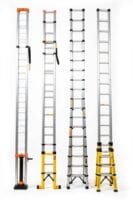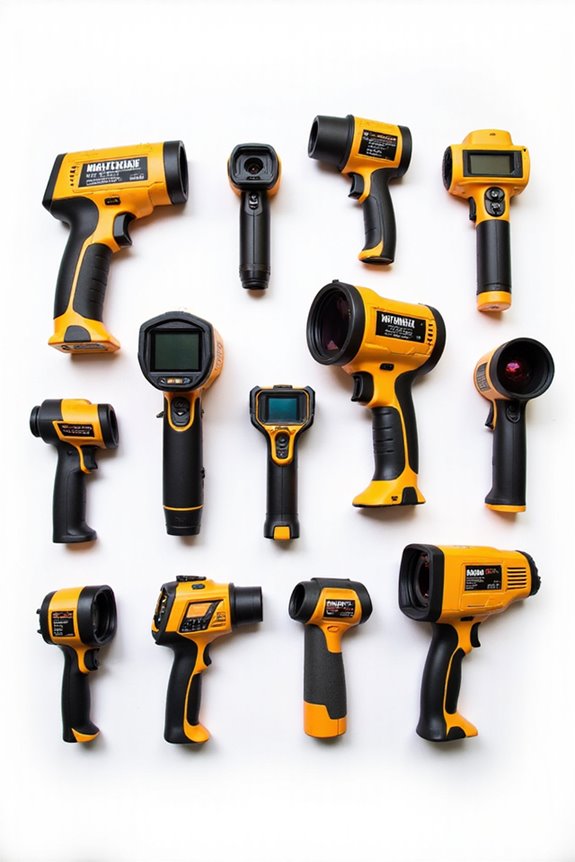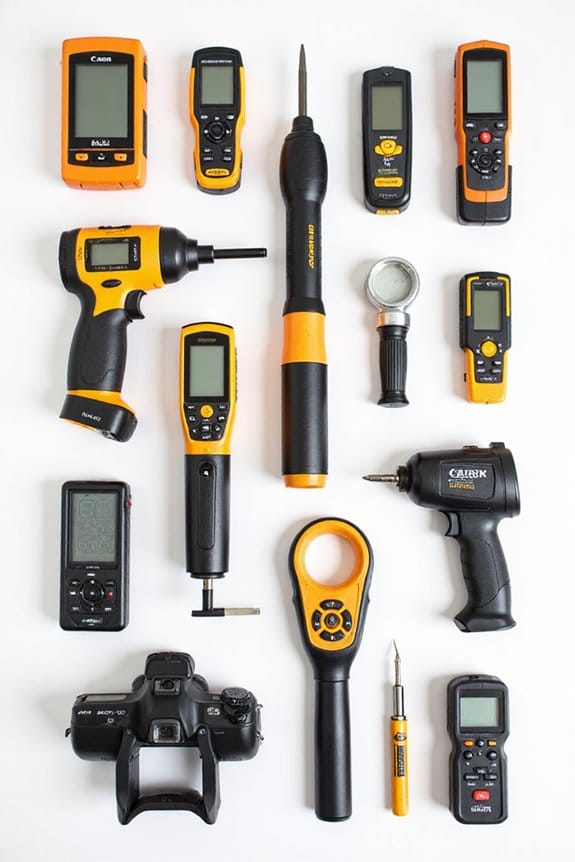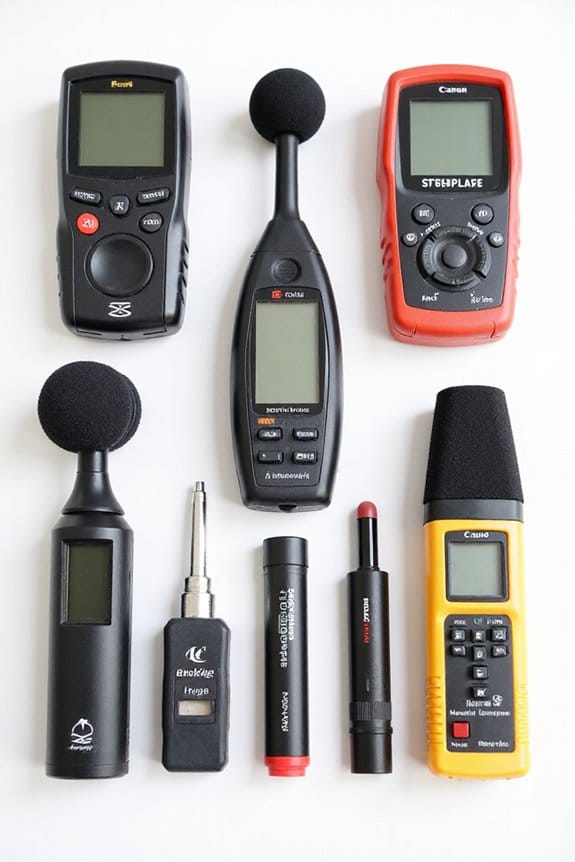As an Amazon Associate, we earn from qualifying purchases. Some links may be affiliate links at no extra cost to you. Although our opinions are based on curated research, we haven't used these products. Articles generated with AI.
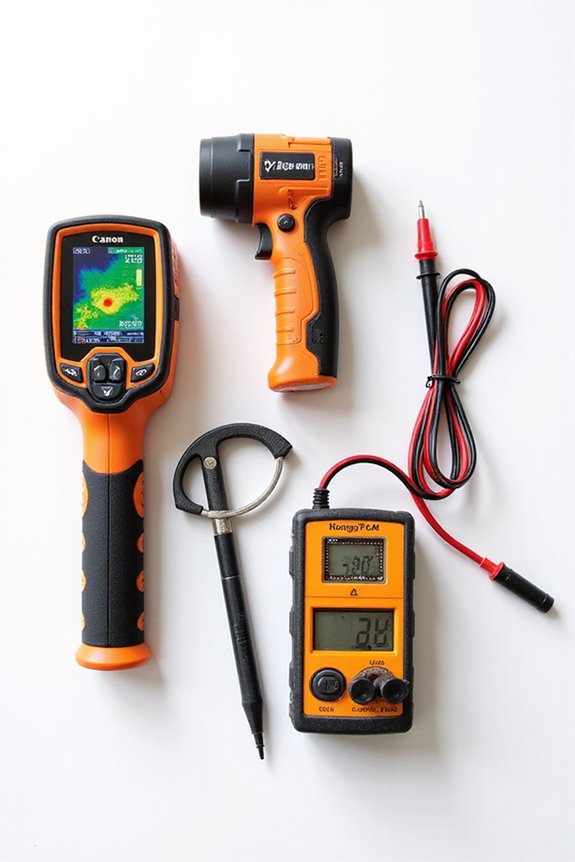
3 Best Specialty Tools Every DIY Enthusiast Should Own
If you’re a DIY enthusiast, there are three specialty tools you really should have. First, grab a heavy-duty hose clamp pliers for quick and easy hose jobs. Next, consider the Capri Tools Super-Thin Open End Wrench Set; it’s a lifesaver in tight spots. Finally, versatile hose clamp pliers with zinc clamps are a must for efficient hose work. Trust me, these tools will make your projects smoother. Stick around, and I’ll share even more handy tips!
Key Takeaways
- Hose clamp pliers are essential for removing and installing clamps efficiently, saving time during automotive repairs.
- A super-thin open-end wrench set allows you to work comfortably in tight spaces and reach difficult fasteners.
- Quality tool material, like Chrome Vanadium steel, ensures durability and longevity for frequent use.
- Regular maintenance and proper storage extend the lifespan of specialty tools, keeping them in optimal condition.
- A solid warranty and good customer support can enhance your confidence in purchasing specialty tools.
Hose Clamp Pliers Heavy Duty Tool for Hose Clamps
Hose Clamp Pliers Heavy Duty Hose Clamp Tool with Locking Device and Non-Slip Handle Removal and...
- The Hose Clamp Pliers helps you remove and install flat-type or ring-type hose clamps easily with the max opening of 1.38inch(35mm)
- The max opening of the hose clip pliers is 1.38inch(35mm) with a total length 215mm.
- Made of high quality heavy duty carbon steel, sturdy and lasting.
If you’re a DIY enthusiast who tackles automotive repairs, the Hose Clamp Pliers Heavy Duty Tool is a game changer for you. Here’s why:
- Versatility: This tool easily handles flat-type and ring-type hose clamps.
- Perfect Size: It opens up to 1.38 inches (35mm) and has a total length of 215mm, fitting snugly in tight spaces.
- Great Grip: With a non-slip PVC handle and locking device, it gives you the comfort and control you need.
- Multi-Angle Operation: The rotating tip lets you reach those tricky spots effortlessly.
Many users say they wish they’d bought it sooner—who doesn’t want to save time during repairs?
Best For: This tool is best for DIY enthusiasts and professional mechanics looking to efficiently handle hose clamps in automotive repairs.
Pros:
- Versatile: Effectively works with both flat-type and ring-type hose clamps, suitable for various applications.
- User-Friendly Design: Features a non-slip PVC handle and locking mechanism, enhancing grip and comfort during use.
- Efficient Operation: The ratchet feature holds clamps open, simplifying adjustments and enabling one-handed operation.
Cons:
- Durability Concerns: Some users have reported mixed feedback on the tool’s long-term durability and construction quality.
- Adjustment Period: Initial adjustments to the tool’s design may require some users to adapt before achieving maximum ease of use.
- Minor Usability Issues: A few users experienced minor problems with detent positions, affecting the overall functionality at times.
Capri Tools Super-Thin Open End Wrench Set (CP11850-14MST)
Capri Tools Super-Thin Open End Wrench Set (Master Set), CP11850-14MST, Silver
- Super-thin ultra low profile wrenches let you reach fasteners in tight clearance. Just 2. 2 to 5. 6 mm thin and constructed of premium forged steel, these super-thin open...
- The wrench head is tipped at a 15-degree angle. Useful especially in narrow spots, after each 15-degree turn, flip the wrench over to quickly engage the fastener again
- Premium Chrome Vanadium steel forged with a complete 10-step state of the art heat treatment process, constructed for serious professionals. Flawless chrome plating,...
When tackling those tricky projects, the Capri Tools Super-Thin Open End Wrench Set (CP11850-14MST) is your new best friend. This incredible set includes 14 open-end wrenches, covering 20 metric and 8 SAE sizes, from 6-24 mm and 1/4-3/4 inches.
- Ultra Thin Design: With a thickness of just 2.2 to 5.6 mm, these wrenches effortlessly fit into tight spaces.
- Durable Build: Made from premium Chrome Vanadium steel, they’re ready for tough jobs.
- Convenient Storage: The included Mechanics Tray keeps everything organized.
You’ll wonder how you managed without it!
Best For: Professionals and DIY enthusiasts looking for a reliable and versatile wrench set that can access tight spaces.
Pros:
- Ultra-thin design allows for easy maneuvering in cramped areas.
- Durable construction from premium Chrome Vanadium steel ensures longevity and resilience.
- Organized storage in a spill-resistant Mechanics Tray keeps wrenches neatly arranged.
Cons:
- The minimal thickness may compromise grip strength in certain applications.
- The set may not include additional specialized sizes for unique tasks.
- Price might be higher than basic wrench sets, but reflects quality and performance.
Hose Clamp Pliers Mechanic Tools with Zinc Clamps
Sale
zDwfDc Hose Clamp Pliers Mechanic Tools with Swivel Flat Band to Remove or Install, Hose Removal...
- PRODUCT SIZE:Hose clamp tool 8.6inch length and 6 11mm and 14mm zinc clamps makes it more efficient, this convenience saves your precious time and energy in pipeline...
- MATERIAL:Hose clamp pliers automotive are made of quality carbon, soft PVC handles for anti-slip and comfort grip, hard and durability
- ADVANTAGE:Hose clamp pliers with non-slip rubber handles are a big advantage, allowing you to apply the clamps quickly and securely
Hose Clamp Pliers with Zinc Clamps are a must-have for any DIY enthusiast, especially if you immerse yourself in automotive projects. Here’s why you need them:
- Efficiency: These pliers make hose removal and installation a breeze, saving you time and energy.
- Durability: Made from quality carbon and featuring soft PVC handles, they’re designed to last. You’ll appreciate that grip!
- Versatility: The included zinc clamps (sizes 11mm and 14mm) cater to various automotive tasks, including fuel and pipe spring clips.
Trust me, once you try these, you won’t want to tackle your projects without them!
Best For: DIY enthusiasts and automotive hobbyists looking for efficient tools for hose removal and installation.
Pros:
- Durable construction with quality carbon material ensures long-lasting use.
- Non-slip rubber handles provide a secure grip and enhance comfort during extended use.
- Includes versatile zinc clamps in two sizes, catering to a variety of automotive tasks.
Cons:
- Limited to specific clamp sizes (11mm and 14mm) which may not suit all applications.
- The fixed length of 8.6 inches may not be ideal for tight or hard-to-reach spaces.
- Some users may prefer additional clamp sizes for broader compatibility in automotive projects.
Factors to Consider When Choosing Specialty Tools

When you’re picking out specialty tools, you’ve got to evaluate a few key factors to make the right choice. Tool material quality, ease of use, and design can really make or break your DIY experience. And don’t forget about versatility and size—after all, no one wants a tool that can’t fit in their toolbox, right?
Tool Material Quality
Choosing the right specialty tools hinges on understanding the quality of their materials. Here are a few key factors to evaluate:
- Material Strength: High-quality carbon steel offers excellent durability and wear resistance. Go for tools that use this or similar materials.
- Heat Treatment: Look for Chrome Vanadium steel tools that have undergone heat treatment, making them resilient to heavy use.
- Corrosion Resistance: A shiny chrome finish isn’t just for looks; it helps prevent rust—essential for longevity.
- Ergonomic Design: Soft PVC handles enhance your grip. Trust me; your hands will thank you after a long project!
- Thickness: For tight spaces, choose ultra-thin profiles. You’ll save some serious knuckle banging!
Investing in quality pays off!
Ease of Use
While it might seem like a small detail, how easy a tool is to use can make or break your DIY project. Here are some factors to evaluate:
- One-Handed Operation: Look for tools that allow you to operate them with one hand. This is a game-changer for tasks like hose clamp adjustments.
- Ergonomic Handles: Tools with non-slip grips keep you comfortable and in control, especially when working in tight spaces.
- Locking Mechanisms: These features simplify operations by holding parts steady, easing adjustments, and reducing strain.
- Weight and Balance: Lightweight tools help you maneuver more easily.
- Multi-Angle Operation: This enhances accessibility, making your tasks less of a contortionist act! Choose wisely for smoother projects.
Design and Ergonomics
Evaluating the tools you have for comfort and functionality can set the stage for your DIY success. Here are some key design elements to reflect upon:
- Ergonomic Handles: Look for tools with soft PVC or rubber grips. They provide better comfort during those long projects.
- Low Profile Design: A sleek profile really shines in tight spaces. You’ll appreciate that extra maneuverability!
- Rotating Tips or Adjustable Angles: These features allow for multi-angle operations, making life easier when you’re working in cramped quarters.
- Locking Mechanisms: Tools that hold tension on components let you make adjustments easily.
- Weight Distribution: A well-balanced tool cuts down on fatigue, giving you better control. Who wants to battle heavy gear while working?
Versatility and Application
When it comes to specialty tools, versatility can make or break your DIY experience. Here are a few factors to evaluate:
- Multiple Applications: Look for tools that handle various hose clamps, from round wire tension to flat spring clamps.
- One-Handed Operation: Opt for tools designed for easy one-handed use, especially in tight spaces.
- Multi-Angle Design: Choose tools that allow you to access those stubborn fasteners from different angles.
- Task Range: Find tools versatile enough for diverse jobs, especially if you’re diving into automotive repairs.
- Extra Features: Accessories like locking mechanisms enhance usability, giving you that extra edge during maintenance tasks.
Your toolbox will thank you, and so will your sanity!
Size and Dimensions
Size matters when it comes to specialty tools, especially if you often find yourself working in cramped spaces. Here are a few key factors to take into account:
- Maximum Openings: Tools like hose clamp pliers with a 1.38-inch (35mm) opening are essential. They adapt to various clamp sizes without damaging them.
- Length: Look for tools around 215mm long. They offer the leverage you need for those tricky spots.
- Thickness: Wrenches between 2.2 mm and 5.6 mm let you maneuver around tightly spaced fasteners with ease.
- Ergonomics: Never underestimate handle size and design. A comfortable grip means you can apply more force without straining your hand.
Choose wisely, and those cramped spaces won’t be as intimidating!
Maintenance and Care
After you’ve got the right size specialty tools for those tight spots, it’s time to think about keeping them in top shape. Here are some tips to help you out:
- Regular Cleaning: A quick wipe prevents corrosion, especially for carbon steel or chrome-plated tools.
- Proper Storage: Keep your tools in dry environments—tool trays or cabinets are perfect! This helps avoid moisture and damage.
- Periodic Inspections: Check for wear and tear regularly. Loose components might lead to accidents.
- Lubrication: Apply lubricants on moving parts. Smooth tools are happy tools!
- Follow Guidelines: Stick to manufacturer’s cleaning and storage recommendations—it’s a game-changer for durability.
Take care of your tools, and they’ll take care of you!
Warranty and Support
Choosing the right specialty tools goes beyond just the cutting-edge design or ergonomic grip; warranties and support play a key role, too. Here are a few things to evaluate:
- Warranty Coverage: Does it cover defects? A lifetime warranty often indicates a manufacturer’s confidence in their product.
- Duration: Do you know how long the warranty lasts? Some tools offer repairs or replacements for years, while others don’t.
- Claim Requirements: Check what you need to do for a claim. The easier it is to get support, the better your experience will be.
- Customer Support: Prompt and friendly assistance can really save the day. Tools with clear support policies show a commitment to you, the user.
Happy tool hunting!
Budget Considerations
Selecting specialty tools involves not just understanding warranties and support but also setting a budget that keeps your finances intact. Here’s what you should consider:
- Establish Your Budget: Determine how much you’re willing to spend before you start shopping, so you can find the best value without breaking the bank.
- Invest in Quality: Sometimes, a higher upfront cost pays off. A durable tool lasts longer, saving you money on replacements.
- Frequency of Use: If you’re a weekend warrior, mid-range tools may work for you. But if you’re a regular DIYer, consider splurging a bit.
- Price Comparison: Don’t settle! Prices can vary, so shop around.
- Additional Costs: Factor in storage, maintenance, and accessories to fully utilize your purchases. Happy tool hunting!
Frequently Asked Questions
What Materials Are Specialty Tools Commonly Made Of?
When you think of specialty tools, their materials can surprise you. Typically, they’re crafted from:
- Steel – Durable and strong, perfect for cutting and shaping.
- Aluminum – Lightweight yet sturdy; great for portability.
- Plastic – Used for grips or non-slip handles to keep things comfortable.
- Composite Materials – Combining strength and lightness; they make tools versatile.
How Do I Maintain My Specialty Tools?
Maintaining your specialty tools is easier than you think! Here’s how you can keep them in top shape:
- Clean Regularly: Wipe them down after each use to remove dust and debris.
- Oil Moving Parts: Apply lubricant to keep everything running smoothly.
- Store Properly: Keep tools in a dry, organized space to prevent damage.
- Inspect Consistently: Look for wear and tear—fix problems before they get worse!
Trust me, a little upkeep goes a long way!
Are Specialty Tools Worth the Investment?
Are specialty tools worth the investment? Absolutely! Think of them as your superheroes—they save you time and effort. Here’s why you should consider them:
- Precision: They give you exact results, making your projects neater.
- Durability: Built to last, they often outlive standard tools.
- Efficiency: You’ll finish tasks faster with the right tool.
Where Can I Find Replacement Parts for Specialty Tools?
Looking for replacement parts for your specialty tools? You’ve got a few solid options:
- Manufacturer’s Website: Check the official site for your tool brand. They often have parts sections.
- Local Hardware Stores: Many carry popular replacement parts. Plus, you’ll get help from knowledgeable staff.
- Online Retailers: Sites like Amazon and eBay usually list a variety of parts. Don’t forget to read reviews!
Keep your tools in top shape, and happy fixing!
Can I Use Specialty Tools for Non-Diy Projects?
Absolutely, you can use specialty tools for non-DIY projects; think of them as Swiss Army knives! Here’s how:
- Creative Arts: Specialty tools can help you with crafting or home decor projects.
- Repairs: They’re perfect for fixing things around your house.
- Gardening: Use them to spruce up your garden.
Just remember, using the right tool makes tasks easier. So don’t shy away—get inventive! Embrace the possibilities!



